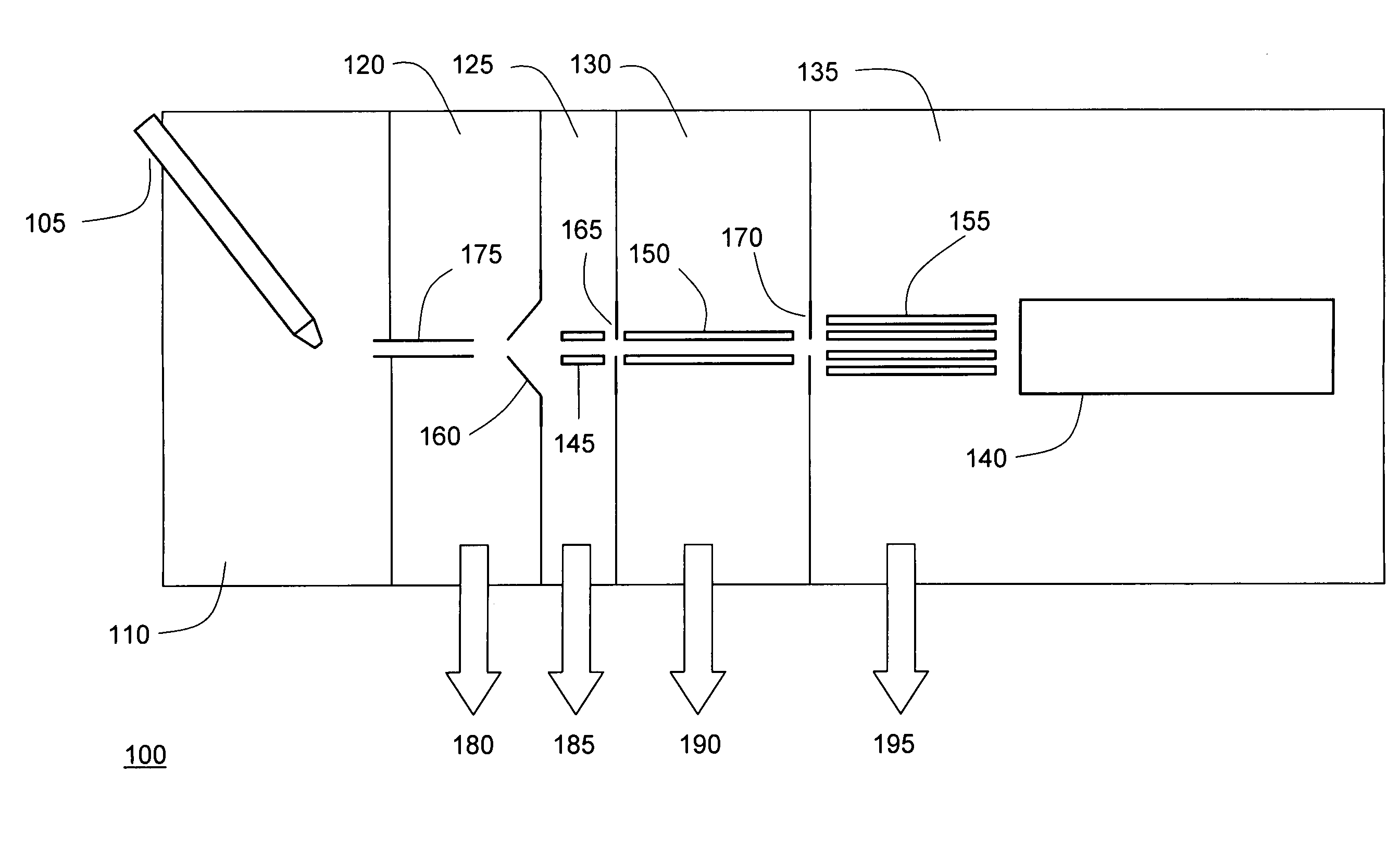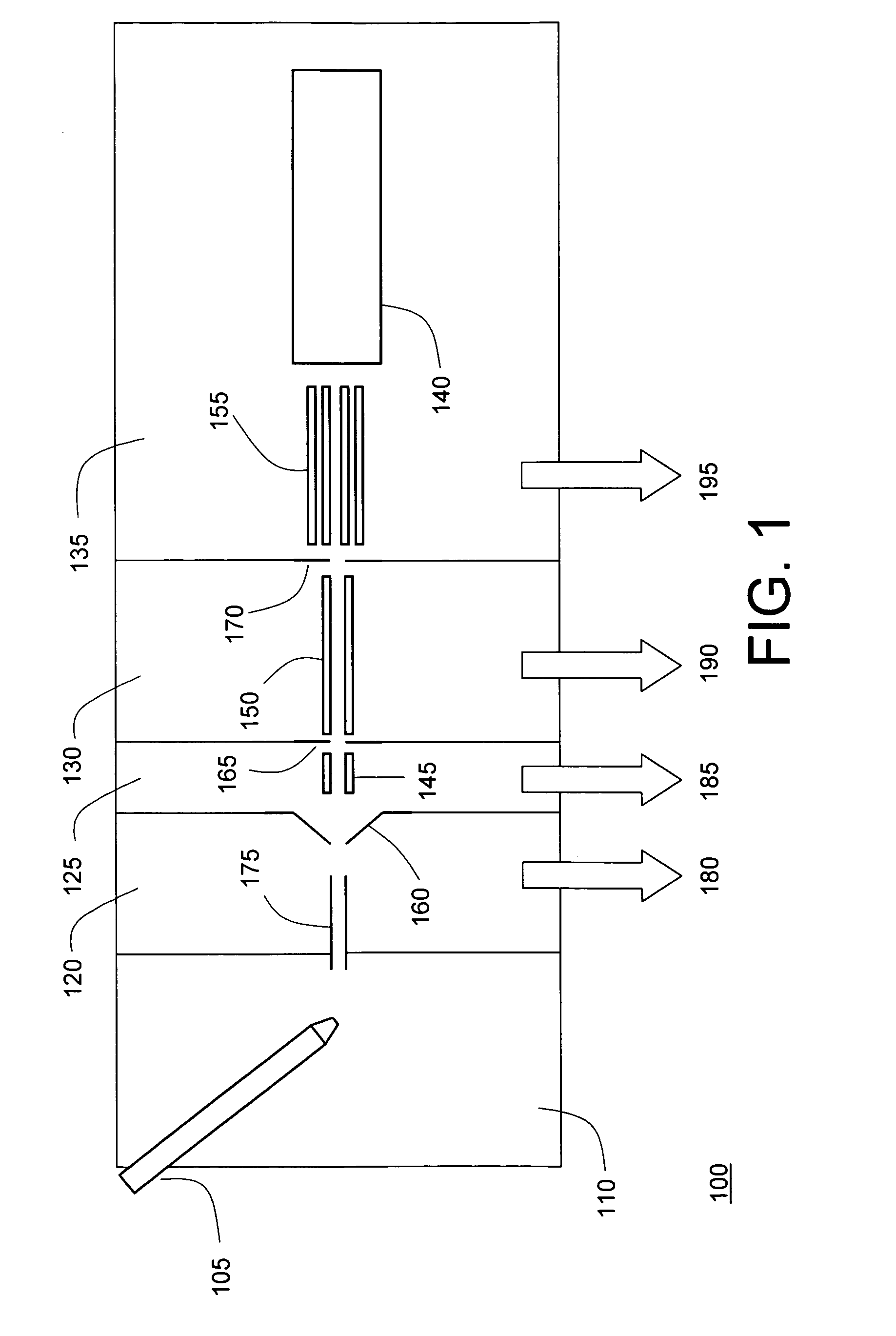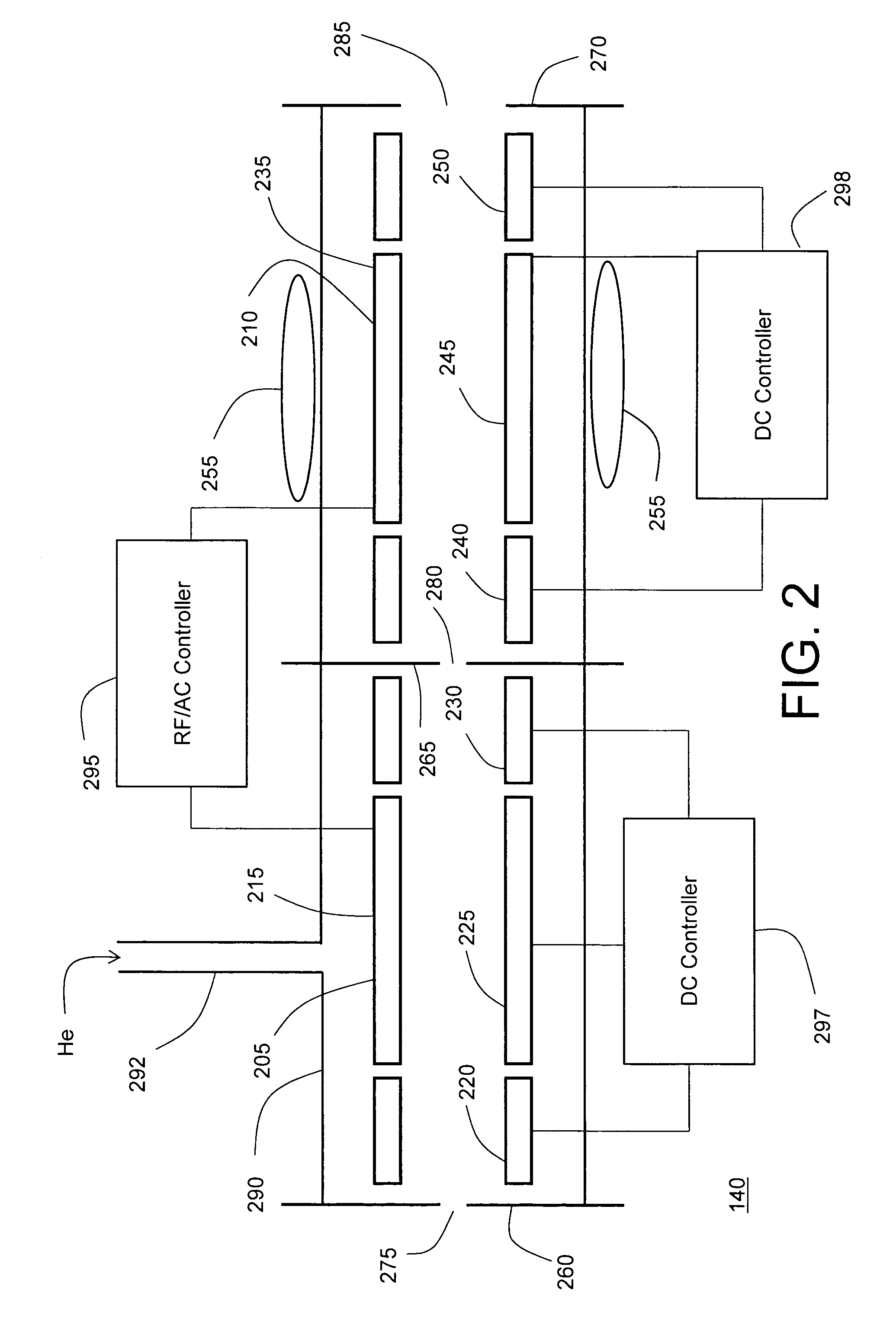Differential-pressure dual ion trap mass analyzer and methods of use thereof
a mass analyzer and dual-ion trap technology, applied in the field of mass spectrometers, can solve the problems of reducing resolution, reducing the kinetic energy of buffer gas, and reducing the efficiency of mass spectral performan
- Summary
- Abstract
- Description
- Claims
- Application Information
AI Technical Summary
Benefits of technology
Problems solved by technology
Method used
Image
Examples
Embodiment Construction
[0017]FIG. 1 depicts the components of a mass spectrometer 100 in which a differential-pressure dual ion trap mass analyzer may be implemented, in accordance with an embodiment of the present invention. It will be understood that certain features and configurations of mass spectrometer 100 are presented by way of illustrative examples, and should not be construed as limiting the differential-pressure dual ion trap mass analyzer to implementation in a specific environment. An ion source, which may take the form of an electrospray ion source 105, generates ions from an analyte material, for example the eluate from a liquid chromatograph (not depicted). The ions are transported from ion source chamber 110, which for an electrospray source will typically be held at or near atmospheric pressure, through several intermediate chambers 120, 125 and 130 of successively lower pressure, to a vacuum chamber 135 in which differential-pressure dual ion trap mass analyzer 140 resides. Efficient tr...
PUM
 Login to View More
Login to View More Abstract
Description
Claims
Application Information
 Login to View More
Login to View More - R&D
- Intellectual Property
- Life Sciences
- Materials
- Tech Scout
- Unparalleled Data Quality
- Higher Quality Content
- 60% Fewer Hallucinations
Browse by: Latest US Patents, China's latest patents, Technical Efficacy Thesaurus, Application Domain, Technology Topic, Popular Technical Reports.
© 2025 PatSnap. All rights reserved.Legal|Privacy policy|Modern Slavery Act Transparency Statement|Sitemap|About US| Contact US: help@patsnap.com



